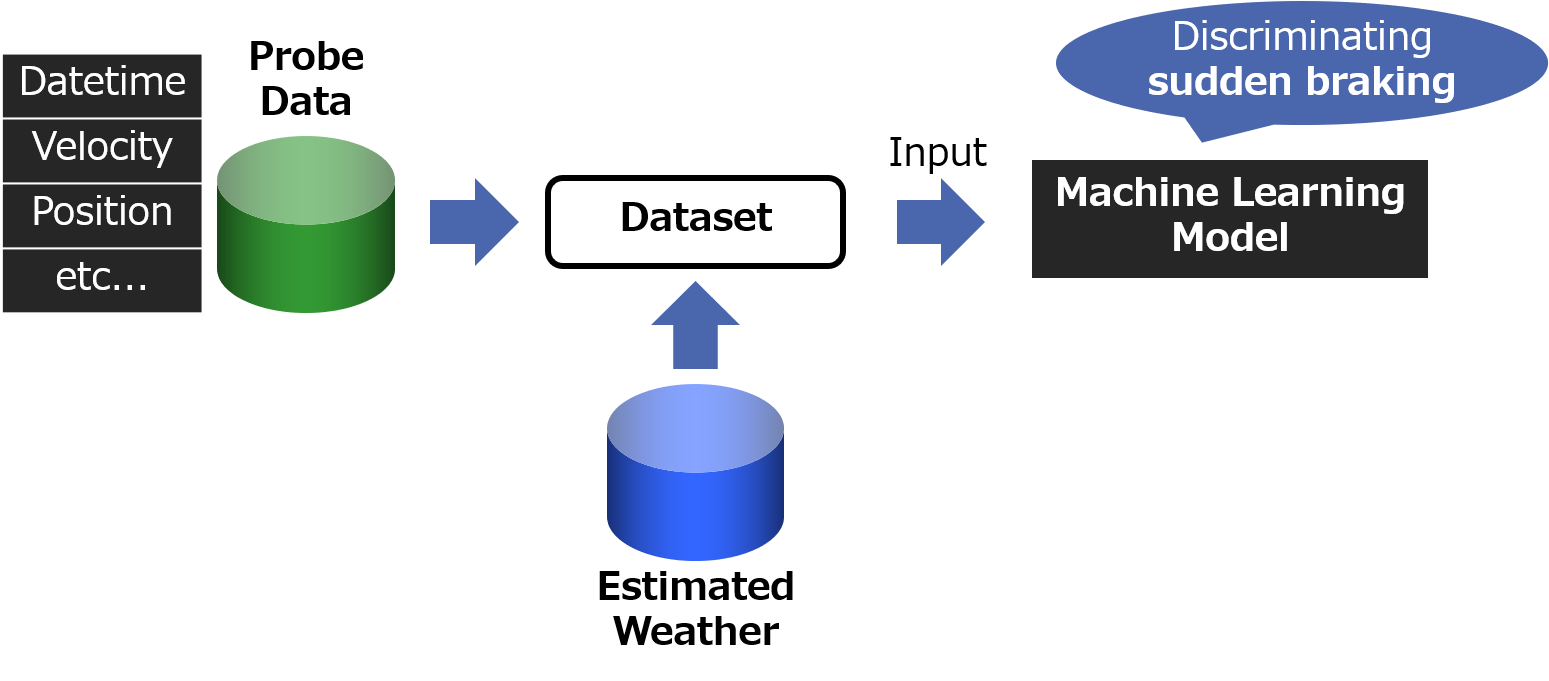 |
Estimating Sudden Braking using Weather Estimation by a Deep Learning Framework from Drive Recorder Data |
|
Although the number of traffic accidents has been decreasing year by year, many people are still victims of traffic accidents. In order to take effective countermeasures against traffic accidents, it is necessary to analyze the situations in which dangerous driving behavior occurs and to take appropriate countermeasures.
In this study, we used weather information inferred from video data from a drive recorder to analyze situations in which sudden braking occurred. Specifically, a deep learning model is used to estimate the weather from the drive recorder video, and a machine learning model is created to identify sudden braking data for the dataset containing the weather information. 
Figure1. Weather estimation overview 
Figure2. Overview of sudden braking discrimination The results of the experiment showed that the model using three classes of weather (clear, rainy, and snowy) improved the identification accuracy compared to the model without weather. On the other hand, the model using six classes of weather (clear, light cloud, cloudy, rain, snow, fog) showed lower discrimination accuracy than the model without weather. However, for a specific group of data, the six classes of weather also showed higher discrimination accuracy, indicating that the weather information inferred from the video data of the drive recorder was effective to some extent. 
Figure3. Experiment result This research was funded by the Ministry of Land, Infrastructure, Transport and Tourism. We would like to take this opportunity to thank the Ministry of Land, Infrastructure, Transport and Tourism. Publications
|
| Kawasaki Laboratory |